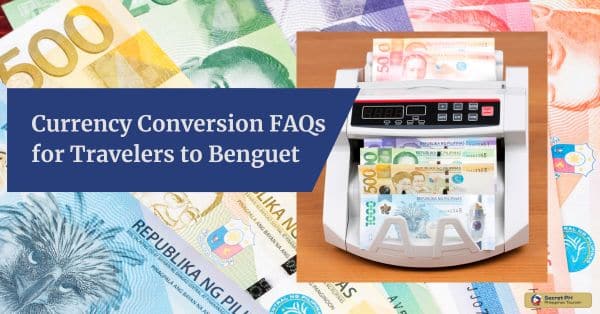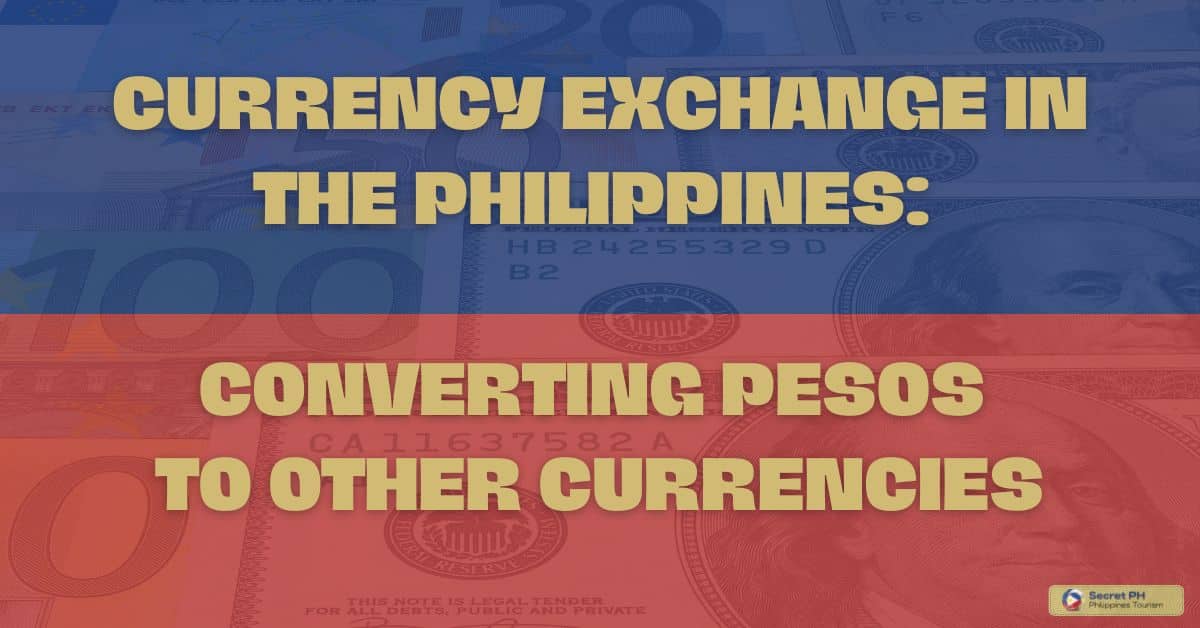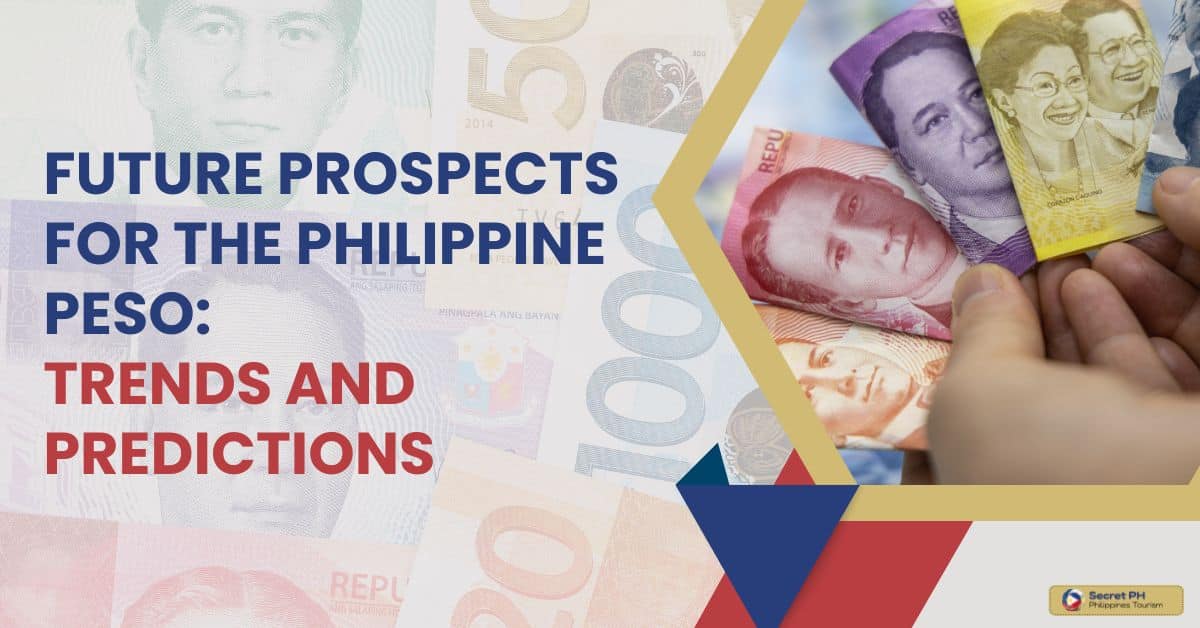The Philippine Peso is the official currency of the Republic of the Philippines and has been used since Spanish colonial times. It plays an important role in economic activity throughout the country, from large-scale international transactions to everyday purchases.
From aspects of this currency, such as coins, banknotes, security features, historical context, exchange rates, and how to handle it safely. With a complete overview of the country’s monetary system, we aim to make it easier to use Philippine Pesos confidently and securely.
In this guide, we’ll look at all aspects of the Philippine currency, and discuss what the future holds for it. Also, we’ll provide tips on how to handle your Philippine Pesos safely and securely.
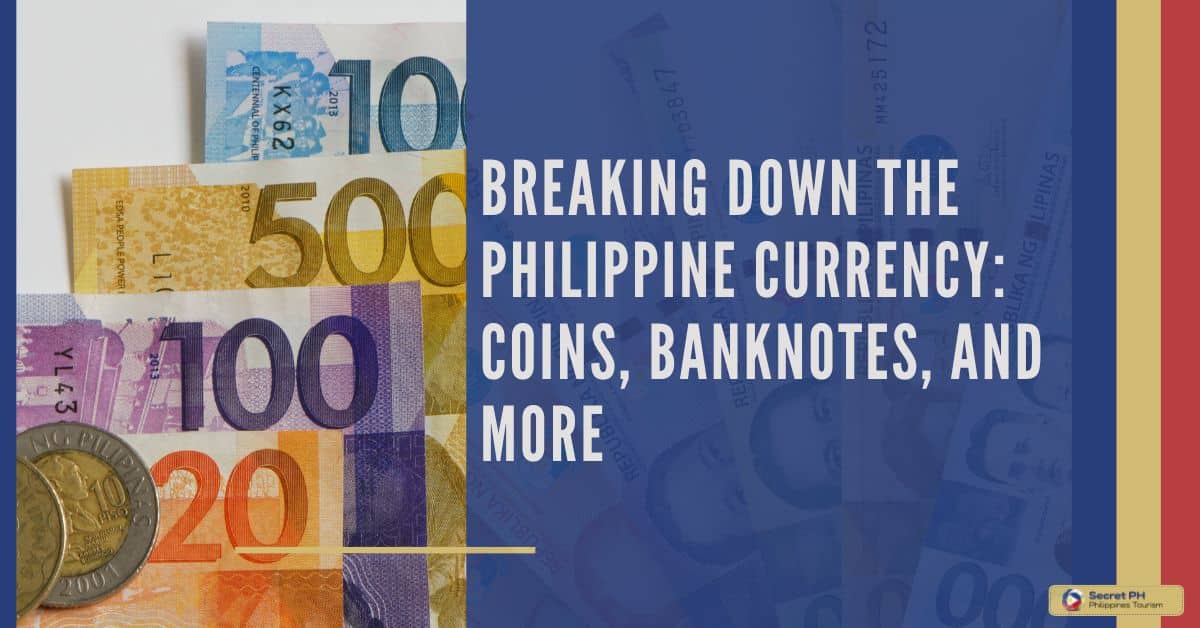
Philippine Coins: Denominations and Features
The Philippine coins come in a variety of denominations, from five centavos to twenty pesos. Here we explore all the different types of coins available in the country, their features, and security details.
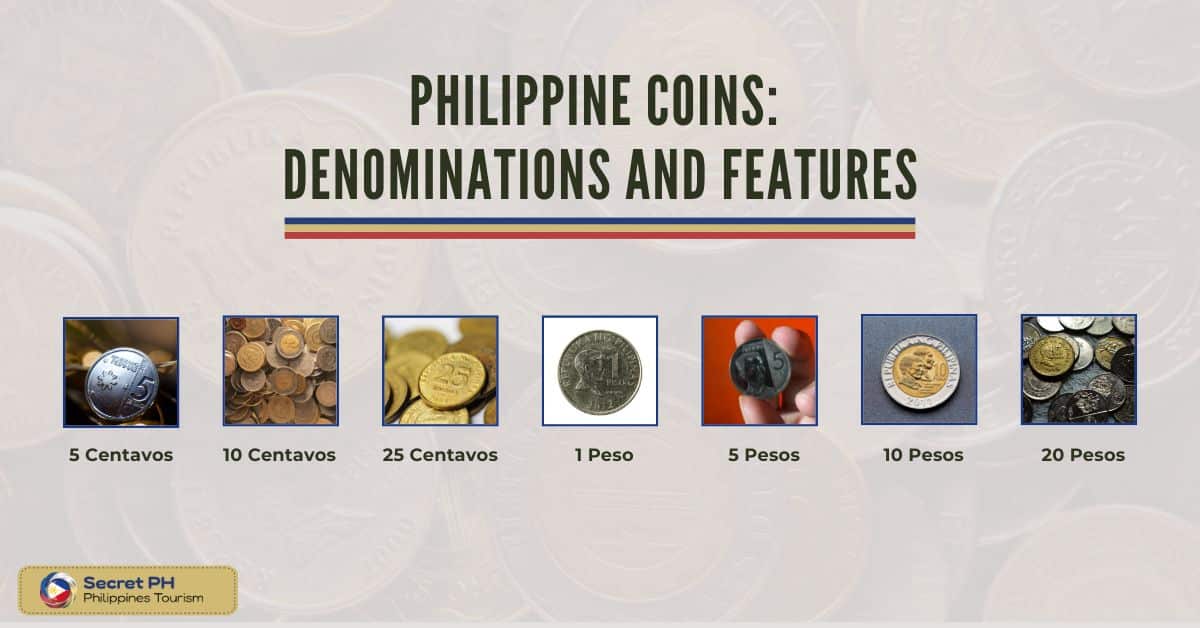
5 Centavos (5¢) Coin
The 5 centavos or 5¢ coin is slightly larger than the 1 centavo coin, and it has an image of a coconut tree on its obverse side. On the reverse side, there are five stars in a circle that symbolize the Philippine archipelago with the value “5¢” inscribed at its center.
10 Centavos (10¢) Coin
The 10 centavos or 10¢ coin is a bit bigger than the 5 centavos and it has an image of an eagle on its obverse side. The reverse side of this coin features ten stars in a circle which symbolizes the Philippine archipelago with the value “10¢” inscribed at its center.
25 Centavos (25¢) Coin
The 25 centavos or 25¢ coin is slightly bigger than the 10 centavos and it has an image of a carabao on its obverse side. On the reverse side, there are two concentric circles. The inner circle features the value “25¢” while the outer one has 25 stars representing the Philippine archipelago.
1 Peso (₱1) Coin
The 1 peso or ₱1 coin is the largest and most commonly used denomination of Philippine coins. It has an image of a “sampaguita” flower on the obverse side and has a textured design with “1 PISO” inscribed at its center. On the reverse side, there is an image of the Code of Kalantiaw which symbolizes justice and law in the country.
5 Pesos (₱5) Coin
The 5 pesos or ₱5 coin is the second largest denomination. It has an image of a “bahay-kubo” on its obverse side, with “5 PESO” and the year it was minted inscribed at its center. The reverse side features the Philippine coat of arms surrounded by two concentric circles and five stars representing the Philippine archipelago.
10 Pesos (₱10) Coin
The 10 pesos or ₱10 coin is the third largest denomination. It has an image of a jeepney on its obverse side, with “10 PESO” inscribed at the center. The reverse side features two concentric circles with ten stars symbolizing the Philippine archipelago and the national motto “Tatag Ng Wikang Filipino” at its center.
20 Pesos (₱20) Coin
The 20 pesos or ₱20 coin is the fourth largest denomination. It has an image of a mangrove forest on its obverse side with “20 PESO” inscribed at the center. On the reverse side, there are two concentric circles with twenty stars representing the Philippine archipelago and a golden sun with 24 rays at its center.
Philippine Banknotes: Denominations and Features
The Philippine banknotes come in a variety of denominations, from twenty pesos to one thousand pesos. Here we explore all the different types of banknotes available in the country, their features, and security details.
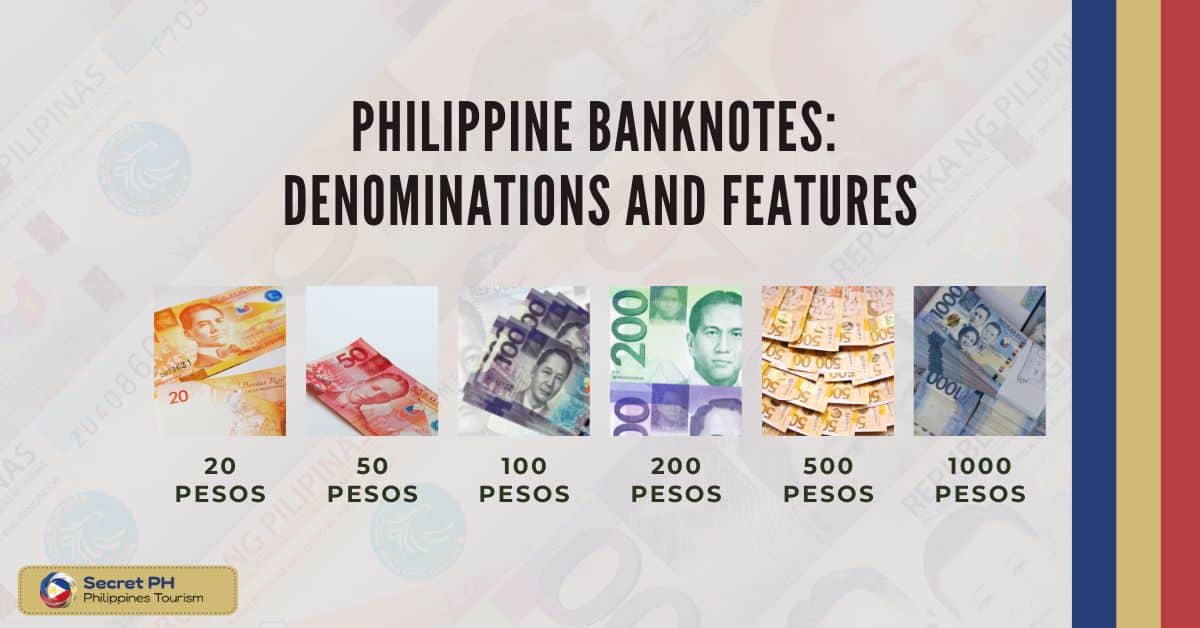
20 Pesos (₱20) Banknote
The 20 pesos or ₱20 banknote is the smallest denomination of Philippine currency. It features a portrait of Andres Bonifacio, one of the founders of the Katipunan revolution, on its obverse side. The reverse side features an image of Fort Santiago, with “Republika ng Pilipinas” inscribed at its center. The banknote also has several security features, including a watermark of Bonifacio and a windowed security thread with the words “Republika ng Pilipinas”.
50 Pesos (₱50) Banknote
The 50 pesos or ₱50 banknote is slightly bigger than the 20 pesos and it has an image of Apolinario Mabini, a hero of the Philippine revolution, on its obverse side. The reverse side features an image of Rizal Park in Manila and “Republika ng Pilipinas” inscribed at its center. This banknote also has several security features, including a watermark of Mabini and a windowed security thread with the words “Republika ng Pilipinas”.
100 Pesos (₱100) Banknote
The 100 pesos or ₱100 banknote is slightly bigger than the 50 pesos and it has an image of Emilio Aguinaldo, president of the first Philippine Republic, on its obverse side. The reverse side features an image of Manila Bay and “Republika ng Pilipinas” inscribed at its center. This banknote also has several security features, including a watermark of Aguinaldo and a windowed security thread with the words “Republika ng Pilipinas”.
200 Pesos (₱200) Banknote
The 200 pesos or ₱200 banknote is slightly bigger than the 100 pesos and it has an image of Manuel L. Quezon, president of the Commonwealth of the Philippines, on its obverse side. The reverse side features an image of the Legislative Building, which is located in Manila, and “Republika ng Pilipinas” inscribed at its center. This banknote also has several security features, including a watermark of Quezon and a windowed security thread with the words “Republika ng Pilipinas”.
500 Pesos (₱500) Banknote
The 500 pesos or ₱500 banknote is slightly bigger than the 200 pesos and it has an image of Corazon Aquino, the 11th President of the Philippines, on its obverse side. The reverse side features an image of Barasoain Church, located in Malolos, and “Republika ng Pilipinas” inscribed at its center. This banknote also has several security features, including a watermark of Aquino and a windowed security thread with the words “Republika ng Pilipinas”.
1000 Pesos (₱1000) Banknote
The 1000 pesos or ₱1000 banknote is the largest denomination of Philippine currency. It has an image of Jose Rizal, a national hero of the Philippines, on its obverse side and an image of a sailing vessel at sea on its reverse side. This banknote also has several security features, including a watermark of Rizal and a windowed security thread with the words “Republika ng Pilipinas”.
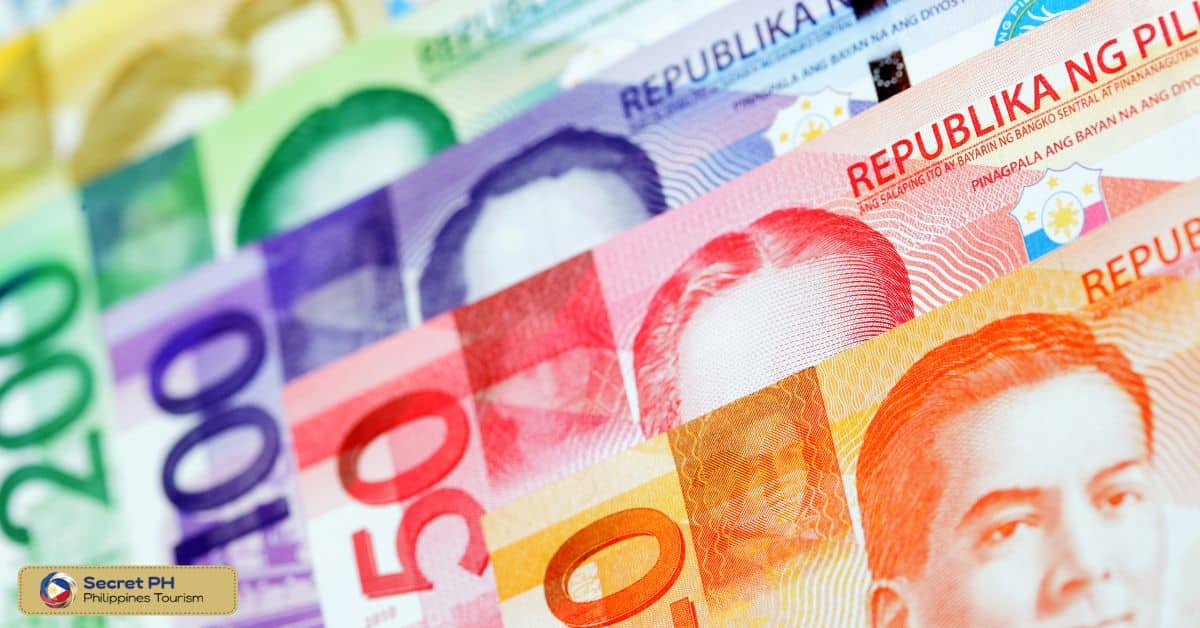
Security Features of Philippine Currency
Philippine banknotes and coins also feature several security features designed to help differentiate them from counterfeit or fake currency. These include a latent image of the denomination, a borderless window with a hologram, and micro printing of the words “REPUBLIKA NG PILIPINAS”, as well as a mintmark indicating the year and place it was minted.
In addition, all Philippine banknotes are printed with reflective printing and optically variable ink which changes color when viewed from different angles. This helps to prevent counterfeiting as these features can only be reproduced by high-end digital printers.
All denominations of Philippine currency also feature a watermark that is visible when held up to the light. The watermark is an image of the figure featured on the obverse side of the banknote or coin and is a further deterrent against counterfeiting.
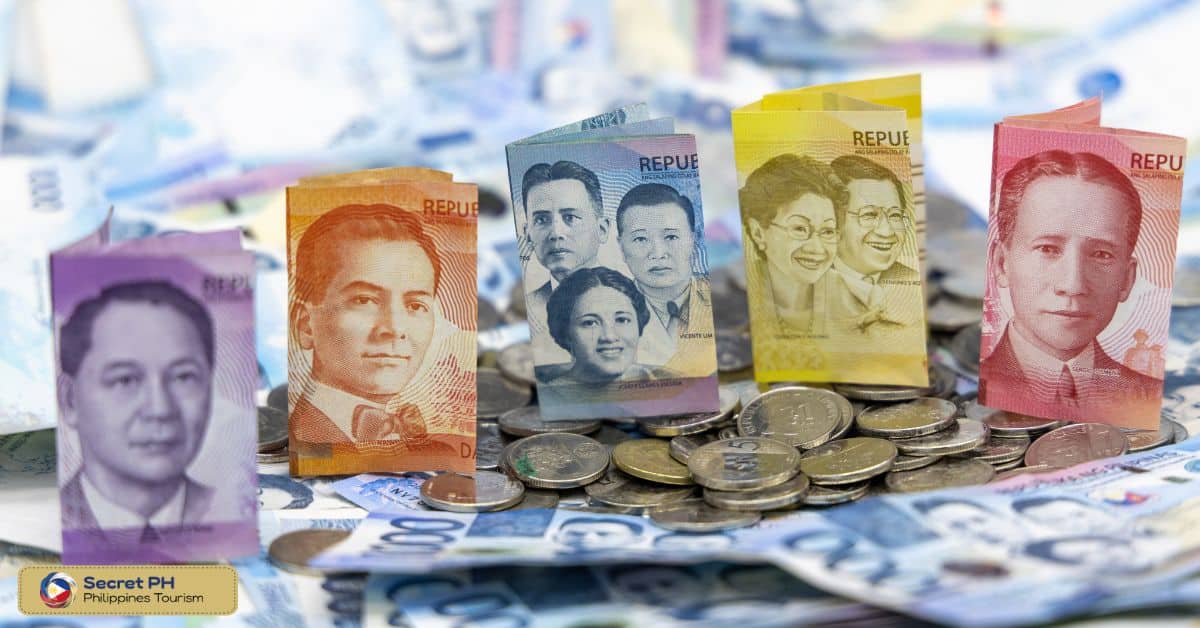
History of Philippine Currency
The Philippine Peso has been the official currency of the Philippines since Spanish colonial times. Although its exact origin is unknown, it is believed to have originated from the Chinese silver coins brought by traders during the pre-colonial period. The first official coinage was issued by the Spanish government in 1865 and circulated until 1911 when American rule began and the US Dollar became the official currency.
The first Philippine Peso was issued in 1949 after gaining independence from the United States. The peso has since gone through various iterations and denominations but remains a stable currency in the Philippines today.
It is managed by Bangko Sentral ng Pilipinas, which is responsible for setting monetary policy and issuing the currency. The Philippine Peso is pegged to the US Dollar, and its value against other currencies can be seen on exchange rate tables.
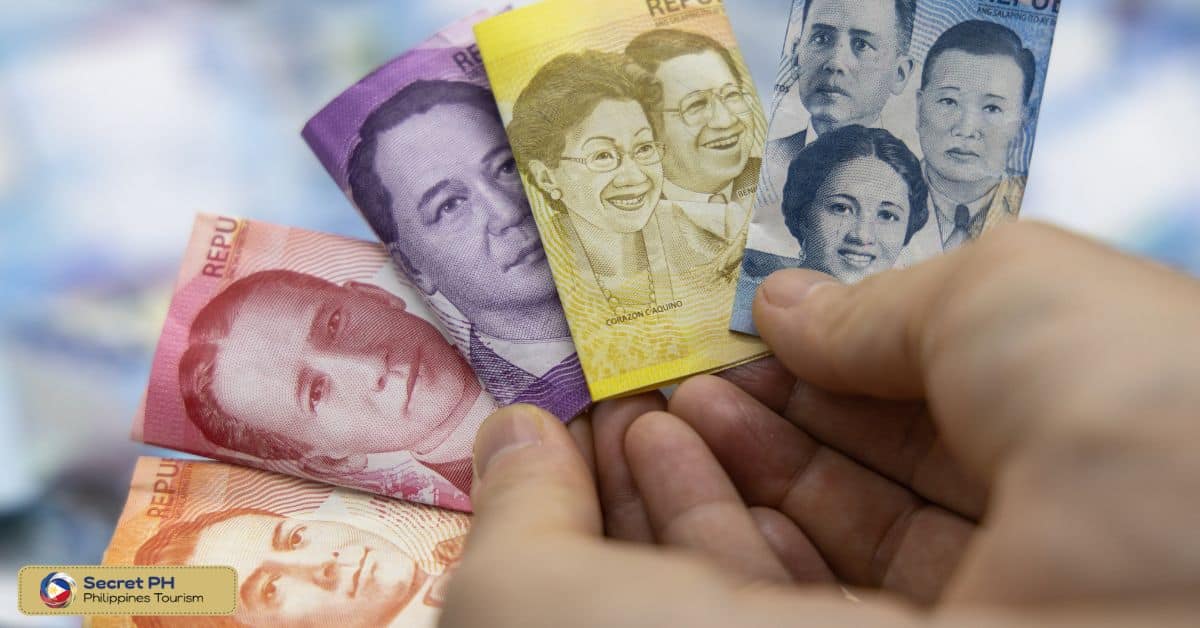
How to Exchange Foreign Currency to Philippine Peso
Exchanging foreign currencies into Philippine pesos can be a daunting task. To help make the process easier and more efficient, here are some steps you need to take when exchanging your currency:
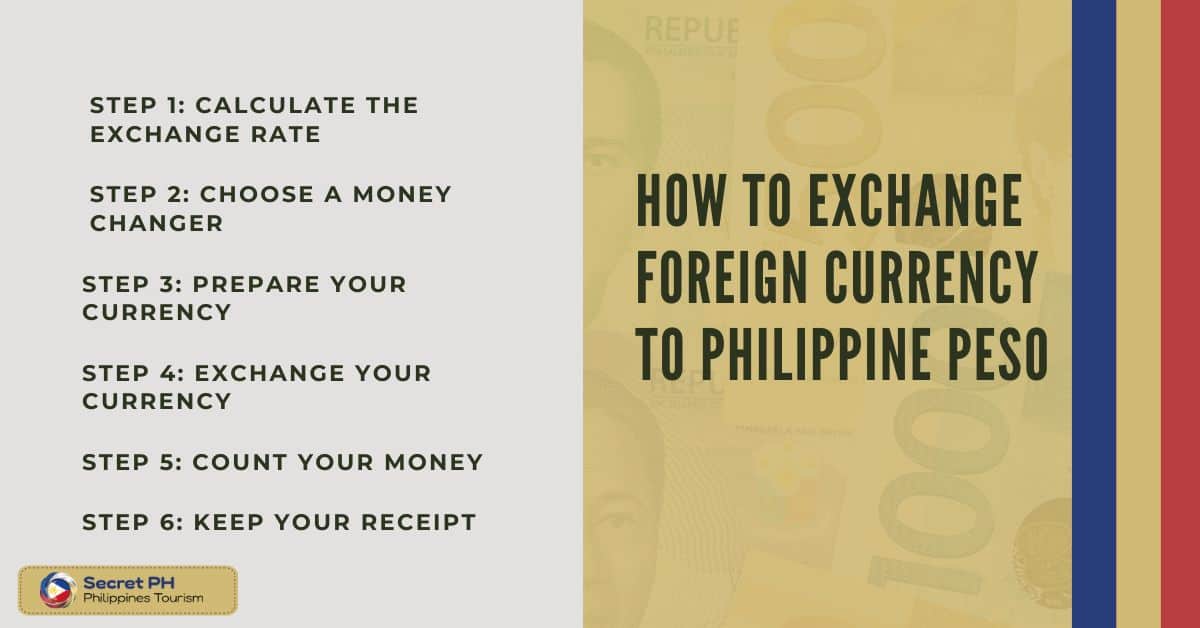
Step 1: Calculate the Exchange Rate
The first step in exchanging your foreign currency into Philippine pesos is to calculate the exchange rate. You can do this by checking the latest exchange rates on websites such as XE or Currency Converter, or you can inquire through banks and other money changers.
Step 2: Choose a Money Changer
Once you have determined the current exchange rate, you can now find a reliable money changer. Check if the money changer is registered with the Philippine Central Bank and verify their credentials to ensure that your exchange transaction is secure.
Step 3: Prepare Your Currency
Before exchanging your currency, prepare it in its original form. Make sure that all bills are crisp and in good condition without any folds, tears, or damages.
Step 4: Exchange Your Currency
When exchanging your foreign currency for Philippine pesos, present the money changer with your original bills and make sure to get a receipt for your transaction. The money changer will then provide you with the corresponding amount in Philippine pesos minus their exchange fees.
Step 5: Count Your Money
After the exchange transaction, carefully count your Philippine pesos and make sure that it is the same amount stated on the receipt. If there are any discrepancies, contact the money changer immediately for clarification.
Step 6: Keep Your Receipt
Lastly, be sure to keep your receipt as it will be useful when filing taxes or if you need to exchange the pesos back into your foreign currency.
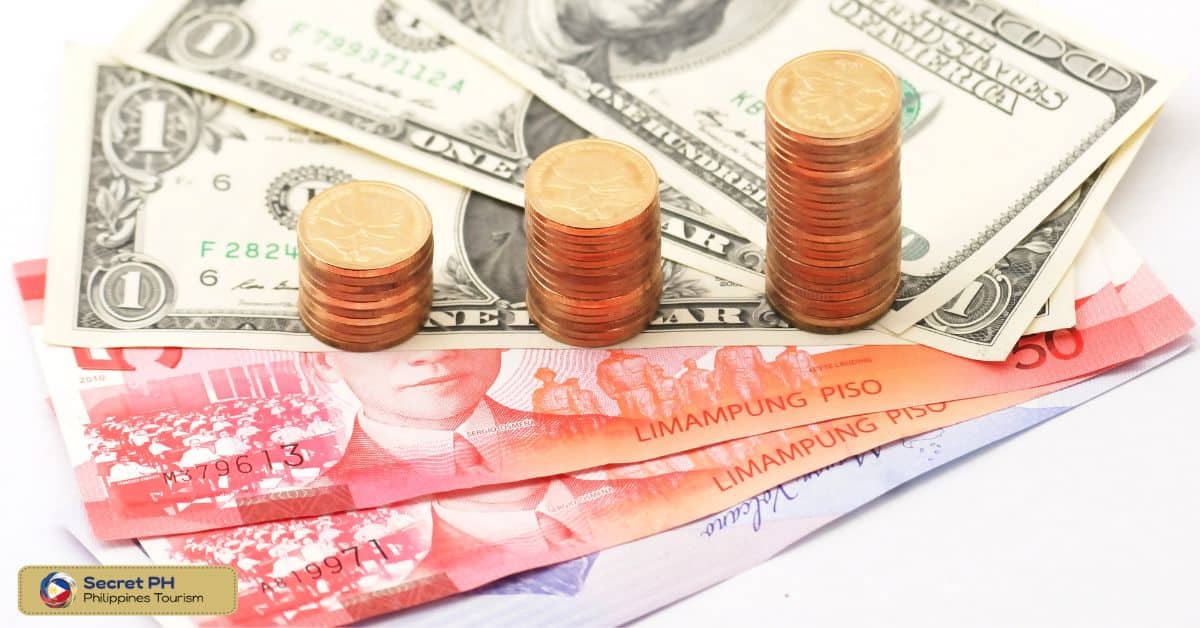
Tips for Handling Philippine Currency
When dealing with Philippine Pesos, it is important to know how to handle them safely and securely. To make sure you stay safe when handling the Philippine currency, here are some tips:
Check for authenticity: Before using or exchanging a banknote or coin, it is important to check its authenticity. Currency notes should have a watermark and security thread that matches the portrait on the note, while coins must be properly circular in shape with no visible dents or scratches.
Keep track of your money: Always keep track of your money when handling Philippine currency: make sure you count each denomination before and after transactions. This ensures that you don’t lose money when making payments or exchanging currency.
Keep your money secure: When storing Philippine Pesos, it is important to keep them in a secure place such as a wallet or purse. Never leave your money unprotected or exposed, as this puts you at risk of theft or fraud.
Exchange your money at an authorized exchange house: When exchanging foreign currency for Philippine Pesos, it is important to go to an authorized exchange house. This ensures that you get the best possible rate for your money and that you are not being scammed.
Be aware of counterfeit currency: Counterfeit currency is a major problem in the Philippines, so it is important to know its characteristics. It is also important to never accept counterfeit bills or coins as payment, even if they look genuine.
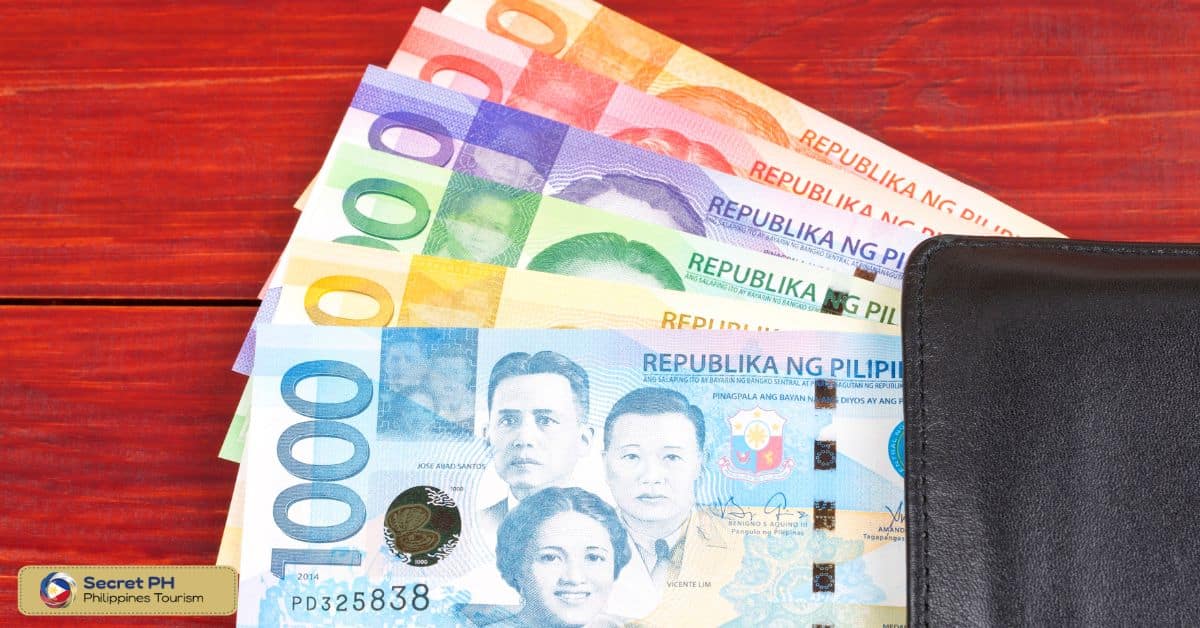
Future of Philippine Currency: Plans and Updates
The future of the Philippine currency looks bright, as the government has plans to update and modernize its monetary system. The Bangko Sentral ng Pilipinas (BSP) is currently in the process of replacing old banknotes with new, more secure denominations. The BSP is also introducing a digital payment system called “PesoNet”, which will allow individuals and businesses to make payments using their mobile phones.
Furthermore, the Philippine government has plans for a new payment system that will be fully digitized and connected to existing banking systems. This digital payment system, called the “Philippine Payment System” (PPS) is designed to facilitate secure online payments and minimize the risk of fraud.
The BSP is also working on introducing a new banknote series that will feature advanced security features such as holograms, micro printing, and optically variable ink. With these updates, the Philippine currency system is sure to become more secure and efficient in the near future.
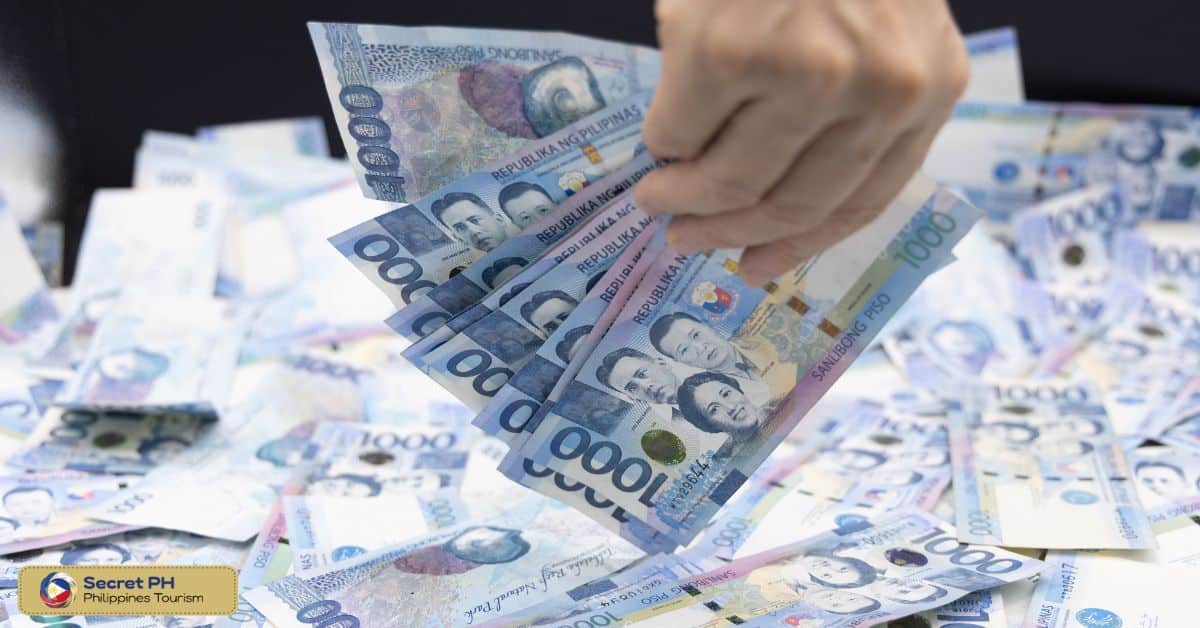
In conclusion
The Philippine currency system is constantly being updated and modernized to ensure that it remains secure and efficient. The current banknotes have several security features that help distinguish them from counterfeits or fake currency.
Additionally, the Bangko Sentral ng Pilipinas is introducing new digital payment systems and a new banknote series with advanced security features. With these updates and plans for the future, the Philippine currency is sure to remain reliable and secure in the years to come.

